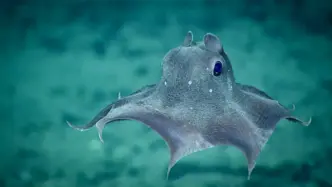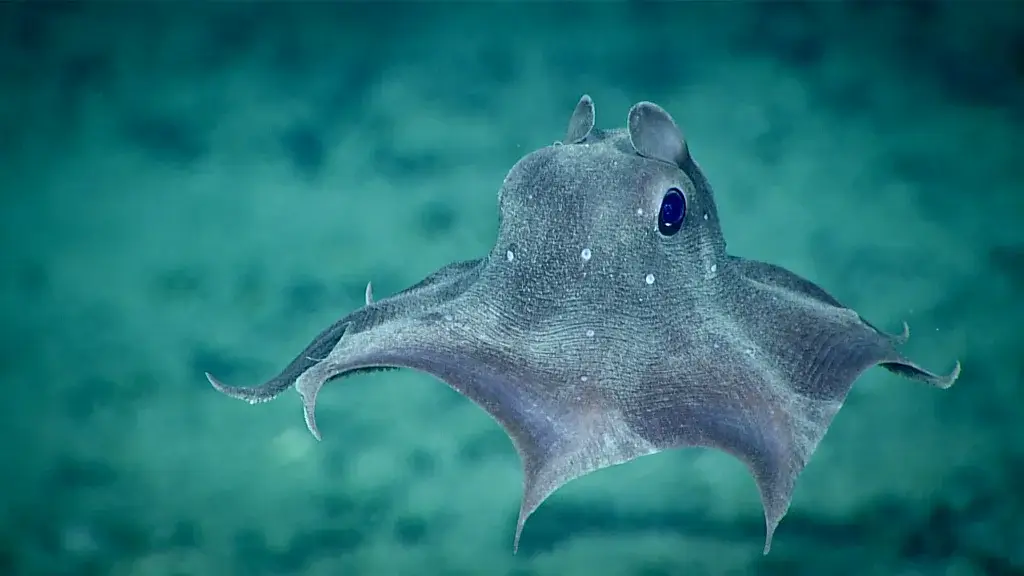Fifty years have passed since the ocean floor off the U.S. East Coast was first disturbed by machines in a deep-sea mining test. The wounds remain untouched by time.
In 1970, the Blake Plateau—a vast underwater mountain range near North Carolina—was the site of a bold experiment. A prototype mining machine rolled across the seabed, scooping up valuable metal nodules. The event marked the world’s first attempt at mining the ocean floor.
Today, that section of the deep ocean still bears the mark.
Marine scientist Samantha Joye has seen it firsthand. In 2018, she plunged over 2,000 meters beneath the surface in a titanium submersible named Alvin. The journey took over an hour. Along the way, glowing sea life lit up the dark. Massive fish, translucent jellyfish, swarms of squid, and delicate sea slugs brushed against the vessel.
The Blake Plateau, she recalls, was unlike any ocean bed she’d ever explored. “It was unbelievably rich in life,” Joye said. Worms, colorful sponges, starfish, and forearm-sized mussels blanketed the seafloor.
But one area was different.
Barren and empty, it was the same site disturbed by the 1970 test. Once home to marine life, it is now just scraped mud.
That first mining effort was brief. U.S. company Deepsea Ventures sent a dredging device across the plateau. It sucked up 60,000 nodules, each packed with manganese, cobalt, and nickel—metals used in batteries, electronics, and military tech.
The operation was intended to prove deep-sea mining was possible. It did. But the project failed to grow further, and activity on the U.S. East Coast stopped.
Still, the damage endured.
In 2022, scientists returned to the site using a robotic vehicle. What they found was shocking. Deep gouges, still visible in the sediment, stretched for more than 43 kilometers. They looked as if carved yesterday.
Where those tracks exist, life does not.
The comparison is stark: vibrant biodiversity in untouched zones, total lifelessness where machines once scraped.
What the area looked like before 1970 is unknown. But scientists say the contrast today is a warning of what could happen elsewhere.
Similar tests in the Clarion-Clipperton Zone in the Pacific Ocean support that view. A simulated mining experiment there in 1989 left long-term impacts. When scientists revisited the site decades later, they found biodiversity greatly reduced.
Large marine animals had not returned. Microbial life, expected to recover quickly, was still at just half of its original abundance—26 years later.
“It’s stunning that even microbes take that long,” Joye noted.
A 2025 follow-up study confirmed those results. Recovery was slow. Some species had started to come back. But scars from even minor disturbances appeared to last for decades or more.
Today’s mining companies insist things have changed.
Firms like The Metals Company and Impossible Metals claim their modern technology is far gentler. Impossible Metals says it plans to collect nodules one by one, carefully avoiding disruption of sediment.
They’ve already requested a mining lease near American Samoa.
“All extraction has an environmental cost,” CEO Oliver Gunasekara said. “But our methods reduce that cost significantly.”
He points out that we already mine in highly sensitive areas like rainforests. He argues that with proper assessments, seabed mining can be managed responsibly.
But researchers remain deeply concerned.
The biggest issue? We barely understand the deep sea.
Over 70% of it has never been mapped. In 2023, scientists studying the Clarion-Clipperton Zone found more than 5,000 unknown species. Most had never been recorded before.
And in 2024, a major discovery changed everything.
NOAA scientists revealed the existence of the world’s largest deep-sea coral reef system—right on the Blake Plateau. Stretching 500 kilometers long and 100 kilometers wide, it spans from South Carolina to Florida. It contains more than 83,000 coral mounds.
These areas could hold medical breakthroughs. Over 20 pharmaceuticals have already come from deep-sea organisms. Many more could be lost before they’re even discovered.
And damage isn’t limited to the seafloor.
Mining stirs up clouds of sediment that drift through the ocean. These “plumes” can travel far. They block light, disrupt feeding, and interfere with communication among marine species.
Some animals, like jellyfish, rely on mucus and light signals. Plumes stress them. Others may have their breathing or digestion affected. Fish could unknowingly eat polluted sediment.
These plumes may also impact climate.
Organisms in the deep ocean play a vital role in carbon cycling. They help trap carbon, preventing it from entering the atmosphere. Experts estimate they pull down around six gigatons of carbon annually—14% of what humans emit each year.
Mining could interfere with this. Planet Tracker research indicates that mining just one square kilometer of seabed could unleash over 170 tonnes of carbon trapped beneath the ocean floor.
A recent report by Christopher Robbins of Ocean Conservancy warned of conflicts between deep-sea mining and fisheries. He said more transparency is needed before licenses are granted.
In the Pacific, tuna migration routes may overlap with future mining sites. Bigeye, skipjack, and yellowfin tuna could be affected. Some small nations rely on these zones for 10% of their tuna catch.
For now, the Blake Plateau isn’t being targeted for new mining. But that could change quickly, says fish ecologist Gorka Sancho. In 2024, he petitioned the White House to protect it permanently.
In contrast, the Clarion-Clipperton Zone is a top target.
It holds more key metals than all land-based reserves combined.
In April 2025, former President Trump signed an order called Unleashing America’s Offshore Critical Minerals and Resources. Soon after, The Metals Company submitted a mining application that included international waters.
That raises legal questions.
The UN Convention on the Law of the Sea (UNCLOS) governs seabed activity in global waters. The U.S. never ratified UNCLOS, but its decisions can still be challenged internationally.
Leticia Reis de Carvalho of the International Seabed Authority warned of potential conflicts.
Meanwhile, some experts urge caution, not panic.
MIT professor Thomas Peacock told Congress in 2025 that the worst-case scenarios may be exaggerated. His 2022 study—conducted with industry support—found that most sediment plumes remained within two meters of the seabed and were relatively light.
Still, he stressed the need for better monitoring tools and modeling. He also recommended setting aside large protected zones to prevent lasting harm.
Around the world, support for a pause is growing.
Over 900 scientists and policy experts have signed a letter calling for a moratorium on deep-sea mining. They want research, regulation, and clear science before any full-scale operations begin.
Until then, the scars left by the first test remain.
A silent warning, etched into the seafloor.
“I see the Blake Plateau as a national treasure,” said Joye. “We still don’t know everything that’s down there. But what we do know tells us this: it’s worth protecting.”









